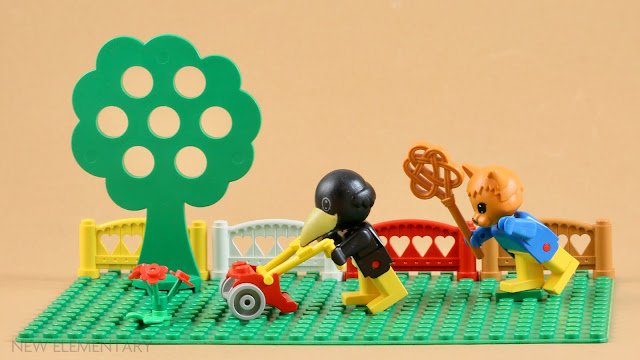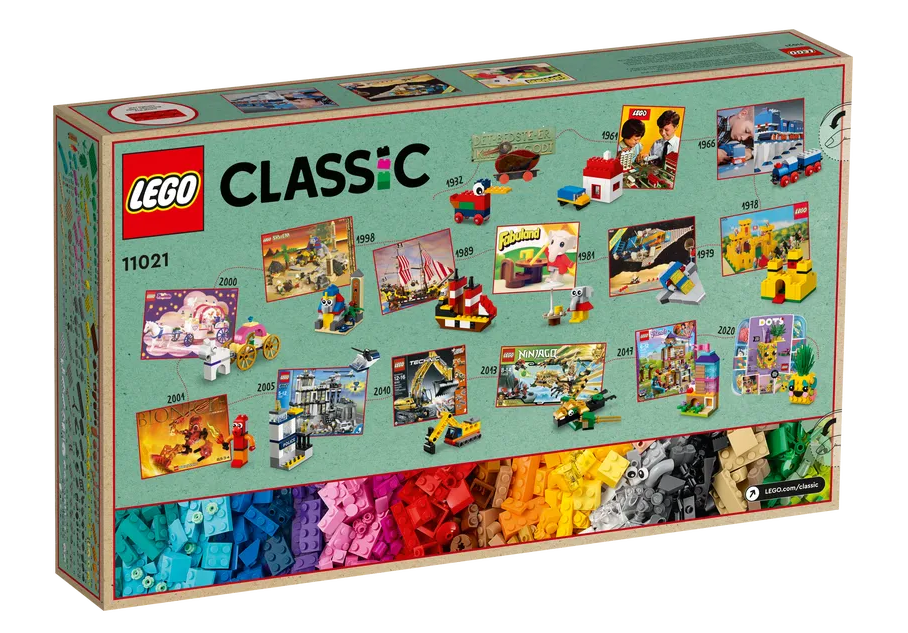Everything You Want To Know About Fabuland
/To celebrate the arrival of the new LEGO Animal Crossing theme, were are republishing our in-depth article all about Fabuland, the original theme including animals as minifigures. Article originally published February 10, 2023.
Welcome to fabulous Fabuland! Whether you grew up adventuring in this magical land of make-believe LEGO characters or stumbled across this fever dream world more recently, join us as we dive deep into The Twilight Zo… I mean Fabuland!
The year was 1979—a good time for all things LEGO. Just the year prior, we had been given the modern minifigure and been transported to the past, present, and future with the release of the LEGOLAND Castle, Town, and Space sets. So how do you follow up on the launch of some of the most beloved themes? You come up with a completely redesigned version of your figures as anthropomorphic animals, launch a line geared towards younger builders, and release tons of new specialized, larger pieces! That sounds like a bad idea… Well, it was a shockingly successful hit!
So let’s break down the elements, both new and repurposed, that led to the success of Fabuland. (Fair warning, this is our most detailed and longest deep dive on a LEGO theme yet!)
Creative Characters
U.s. Ad for FABULAND 1986.
First off, characters. LEGO's consistency in naming their characters leaves much to be desired. With various forms of media released for many of the classic themes, continuity was lacking across books, shows, radio dramas, and other outlets. (For a good example of how convoluted it got, check out the variations of Pirate names when we dove into their lore). Fabuland did a decent job keeping consistency but still ran into many contradictions as well as characters looking similar and evolving throughout the years. And given the attempts to keep cute children’s story names, translations in different countries played a large role in the differences that we see here.
To get a good idea of who and what populates this wonderful realm, we can check out one of the books that provided some of the theme’s narration. The back covers of Barron’s books provide a fantastic census for the majority of the early inhabitants of Fabuland.
Image VIA Morty Mouse - BARRON’S Publishing
Another excellent source is this poster, originally a Swedish ad, shown here courtesy of our friends at The Rambling Brick. The poster depicts many of the characters and their names, this time in Swedish instead of English. We can see the naming discrepancies through the translations depicted here. Fabuland attempted to use alliteration to create names that had the same whimsy as the fairytale-like world. With animal names starting with different letters in different languages, many characters got new names for different countries. For example, Ricke Räv would become Freddie Fox.
Image VIA LEGO SYSTEMS A/S posted on rambling brick
However, and unsurprisingly, the most comprehensive list of the physical characters I could find was from The Unofficial FABULAND Homepage. This list seeks to identify all of the figures and their variations, naming the ones that have defined names and listing those that are similar. The confirmed names shared on the site are the confirmed English names provided in the main media.
me when I find out how many fabuland characters I have to deliver mail to. Image VIA “Boris Bulldog” Barron’s Publishing
Fabuland characters would also undergo a massive change between 1985 and 1986. For the brand new 1986 line, the characters received significant upgrades to their style and detail. The biggest change is the torso printing but the faces were given more personality, especially in the eyes.
Edward’s dapper glow-up. Left is the original figure, right is his apperance post 1985. Images VIA Bricklink
I can’t go through all 140+ different figure variations, but there are a few that are reliably consistent in their depiction and are worth recognizing due to their prominence in the Fabuland universe. Since we’ll see many pictures of the official figures and sets throughout the article, I’ve tried to find some of my favorite depictions from official material to share here.
Lionel/Leonard Lion
The regal mayor. But sometimes the school teacher. Plays a mean accordion. The rest of the characters look to him for advice and help with their problems. He is happy to help.
Image via “Morty Mouse” Barron’s Publishing
Paul/Patrick Parrot
Fabuland’s pioneering paparazzi. Very handy with equipment, he’s known to fix his scooter and his camera. On the scene when excitement happens, he is often depicted injured as the results of his excitement chasing. His real figure is shown here as proof the beak isn’t always missing paint.
Image via Fabuland Memory Card Game
Bertie (Police) and Barty (Fire) Bulldog
Two of the bulldogs who work in the public services. Boris (seen previously) works as the mail carrier, and Buster works alongside Barty as another firefighter. Occasionally they are referred to by their occupation such as “Constable Bulldog”.
Image via “The Fabuland Rainbow” Rivercross Learning Corp. Publishing
Monkey Mates
Well, these look similar to Mike Monkey but with hats. And you get two of them in the same set. The monkeys would often be found sailing and performing nautical tasks. Some names would include Mike, Marc, Oscar (Orangutang) and Gabriel (Gorilla), but later runs wouldn’t include specifics. Their naming is almost as mischievous as they are!
Image via 3673 - Steamboat instructions
Bonnie Bunny
“This is sweet little Bonnie Bunny who is loved by everyone in Fabuland. But she only really loves wild flowers.” — Actual description from set 3635 Bonnie Bunny’s Camper. And that’s a pretty good summary. With Mike Monkey and Morty Mouse.
Image via “Bonnie Bunny” Barron’s Publishing
Doctor Dog
The helpful doctor of Fabuland. He is usually depicted as having all of the book smarts to be a doctor but none of the street smarts outside of his occupation. Sadly the hat was never a physical piece. With Bonnie Bunny.
Image via “Doctor Dog” Barron’s Publishing
Next up are Clara Cow and Harry Horse. This one I’m just going to let LEGO describe and let you come to your own conclusions. Image and text from the official English instruction booklet for set 3665 Ice Cream Shoppe on brickfactory.info.
Should we open debate about sentient and inteligent life in the FABULAND universe? Image via 3680 Camping Caravan instructions
(As a side note, many Fabuland residents take up fishing. But are the fish alive like the rest of the creatures!?)
Scenic Settings
Fabuland released over 100 sets from 1979-1989. This is more sets than were released for the Pirate theme, classic Space, and even all the combined factions of classic Castle sets. Only classic Town was more prolific than Fabuland during this time. Up to this day, there are only a handful of original or licensed themes that have more sets than Fabuland.
A collection of sets up to the 1986 line. includes 3668 Merry-Go-Round, 3679 Mill with Shop, 3681 Amusment Park. 3671 Airport, and 3633 Motor Boat. Image from a 1986 LEGO Insert Catalogue
Two multi-language ads from 1986 LEGO insert catalogues. You could build a society.
So what could you build for the citizens of Fabuland? This vista gives you an idea.
A selection of FABULAND sets from a 1987 LEGO set insert
As with the fanciful characters, the individuals would have habitats that fit the same style. So of course the scene was set with quaint buildings and realistic locations filled with whimsy.
A selection of FABULAND sets from a 1986 LEGO set insert
In an interesting, but not all that surprising decision, many of the sets overlapped with the selection of classic town sets that were available at the time. We see this still occur with themes like DUPLO or the 4+ line releasing similar ideas for younger builders, but Fabuland really didn’t differentiate their line all that much in terms of locational subject matter.
A comparison of two airports avaliable in 1985. Fabuland Image via brickfactory.info and Classic Town image via brickset.com
A Timeline Told Through Ads
I’ll let the pictures do most of the talking since they do a fantastic job showcasing the amazing world of Fabuland. The layouts of the promotional images below are some of the best stylizations representing classic LEGO lines. We’ll go through year by year to see the changes and the differences in advertising.
We’ll start with a 1979 European ad for the release of Fabuland showcasing many of the largest sets that would be offered.
Next, a 1980 U.S. ad featuring some of the new releases and the American numbers of the sets. Please note that for Americans the animals were “sassy” instead of “personable” like in the European ad.
LEGO’s 1981 ad in Europe depicted many of the previous year’s sets as well as many new ones. Look at all that real estate dedicated to this blossoming theme! Fabuland would even be featured with many characters on the cover of this booklet.
Image via brickset.com
In contrast, this was all that was dedicated to Fabuland in the main 1981 American set insert booklet.
From the 1982 European booklet, we learn that the year would keep up the trend of barely any Fabuland being marketed in U.S. ads.
Image via brickset.com
Here’s a full spread of sets from the 1983 European catalog. There wasn’t a huge transition from the previous year, but still a massive presence in Europe.
Image via brickset.com
But wait, there’s more! 1983 dedicated even more space for Fabuland. Interestingly there is the focus on the unique instructions and also the ability to collect special individual characters in small sets “for collecting.” (It could almost have been the first Collectible Fabuland Figure Series!)
Image via brickset.com
The 1984 European insert highlights the brand new Fabuland airport. The substance of the buildings really make it possible to create an entire town, and the ability to buy small character packs made it easy to increase the population. Fabuland had no mention at all in the U.S. booklets.
Image via brickset.com
1985 is one of the best comprehensive overviews of the “pre-updated” figures and includes iconic classics such as the paddlewheel boat, amusement park with Ferris Wheel, and many of the most recognizable characters.
Image via 1985 European Catalog on brickset.com
The 1986 European catalog showed off the newly upgraded Fabuland figures with a whole new range of sets with a few long running favorites. Shoutout to Technic man representation to go along with another non-minifigure theme. Fabuland was finally included in the U.S. booklet, but only in the form of the Mike Monkey image at the start of our “Characters” section.
Image via brickset.com
1987 really revitalized Fabuland all over the world. The normal set insert booklets would have less ad space for the theme, but many other promotional outlets showed off the vibrant sets. The U.S. Sshop at Home booklet would dedicate multiple pages to the theme. Show here is an oversized European booklet highlighting the story and creative aspects of the theme. Many other 1987 images have been shared throughout this article.
Image via brickset.com
In the 1988 U.S. Shop at Home catalog, it had less style than the European ads but still showed off a fantastic selection. Especially in the U.S. the advertisements seemed to target parents much more in the final years.
The 1989 European ad was the beginning of the end. The U.S. would continue to have the line featured heavily in the Shop at Home catalog (however with certain sets blocked out with a “This Set Is No Longer Available” stamp). This would be the end of the line, impressively keeping a number of sets available for multiple years.
Image via brickset.com
Fabulous Instructions
So what was special about the instructions the advertisements were talking about? The story! The sets would have specialized instructions in the form of storybooks showing the characters playfully constructing the buildings, often with some sort of moral to go along with it. Even the smallest sets would provide some sort of narrative.
For example, here is a complete set of instructions for 324 Ricky Racoon on his scooter. While not much to assemble, it shows different ways to play with the pieces and includes information on the character and an advertisement for the rest of the line. Larger sets would have entire storybooks in the same style included.
Images via bricfactory.info
image via brickfactory.info
The instructions from the German version of 350 City Hall instructions show how the larger sets would all be built in this manner and would continue with alternative builds at the end as part of the story. If you want proof that Fabuland was more popular in Europe, try finding English versions of some of the larger sets.
Legacy Elements and Parts
Fabuland has had a lasting legacy, especially through certain specialized pieces. While many molds were retired with the theme, there are a surprising amount of parts that would continue to show up in LEGO sets, some even to this day.
It’s important to remember that these are all standard LEGO parts. While things may seem to be different scales, Fabuland parts all fit immediately into the LEGO System. The parts are suitable for basic building and combine well with the BASIC sets. Here’s a fantastic advertisement that depicts exactly this.
A great representation of how FABULAND was easily integrated with the BASIC line. Image from 1986 LEGO insert catalogue
The animal figures were exclusively designed for the Fabuland line, and the entirety of all of the head molds would remain exclusive throughout the reign of Fabuland. The body section would manage to populate a very short-lived, four-set subtheme of the BASIC line, where the animal heads would be replaced with something closer to a hybrid human/minifigure head. However, these would not find the same popularity. The two styles would never officially cross paths in sets or lore.
Image via Bricklink.com
Now we can get into some of the theme-specific parts that were retired with the end of Fabuland. Many of these were building elements—doors, windows, walls, and roofs. Fabuland was marketed as having “larger sets” in contrast to the LEGOLAND system and standard minifigures. They were larger with prefabricated walls and roofs easier for smaller hands to build with. With bigger pieces and simplistic building styles, it is easy to continue to modify and add to existing sets. A selling point was that “all sets can be used together” to build an entire world.
Look at that, buildings almost ready to go! A selection of some of the major building parts from FABULAND. All images via bricklink.com
But Fabuland would have more specific parts than just for buildings. Transportation was key, and there were many special building parts for all of the vehicles.
All the things that go! Plenty of vehicle building parts at your disposal. The car base would have a few variations to it, so some might pop up later. (And I’m not going to lie to you, the scooter actually did come in one non-Fabuland set, K1062 Road Saftey Kit, a DACTA set.) all images via bricklink.com
Moving on, you can’t talk about Fabuland without the amazing figure tools and accessories. The style and detail truly made the theme stand out.
Look how good those parts are. This is again just a sample of the fantastic pieces avaliable. all images via bricklink.com
Now you might be thinking, where are all the other great pieces? For a deeper dive into more of the fantastic exclusive parts from Fabuland, you can read New Elementary’s Fabuland Lives On: Exquisite but Exclusive article.
The carpet beater and lawnmower are some of my favorite parts of the theme! While those would remain exclusive to Fabuland, some of the other parts start to get to the next point, what parts survived past Fabuland?
Well look at all those FABULAND parts! Set 4167 - Mickey’s Mansion, part of the Disney’s Mickey Mouse theme. Image via brickset.com
Dust off those Fabuland part molds, because LEGO found a way to reuse a ton of the specialty pieces. In 2000, 11 years after the end of Fabuland, came Disney’s Mickey Mouse theme, a short-lived five-set (and one bonus pack) line. However small the release was, it made tons of Fabuland parts available one more time and helped keep the molds for other parts active for years to come. This theme has been referred to as "Modern Fabuland" because of the number of shared elements just between the two different themes.
Below you can see parts that were rereleased in Disney’s Mickey Mouse theme. While many of these are still rare, they are no longer “one set in the 1980s” rare. It’s fitting that many of them are larger figure accessories, as the Mickey Mouse figures were also larger than standard minifigures.
all images via Disney’s Mickey Mouse set inventories on bricklink.com
A Legacy of Parts Continued
While some parts would retire (again) at the conclusion of Disney's Mickey Mouse, many other parts would continue Fabuland’s legacy. Let’s start with one of my favorite pieces, 4088 Brick, Modified 1x4x2 Center Stud Top.
FABULAND (TOP ROW) and Disney’s Mickey Mouse (BOTTOM ROW) car fronts. IMAGES VIA BRICKLINK.COM
It's pretty cool that LEGO used the mold with Fabuland-esque graphics, but how widespread would this piece be? These car fronts are pretty straightforward uses of the same piece and something that doesn’t look that practical.
Below are a sample of some of the sets from a variety of themes that would use this piece, both decorated and not. LEGO was very creative in finding new ways, colors, and occasionally graphics to explore the part’s versatility. And yes, it was one of my favorite parts thanks to 7411 Tygurah’s Roar and my love for Adventurers! (Read all about that theme following the link!)
Multiple subthemes of Belville, Star Wars, Castle , Western, Harry Potter, Pirates, and Orient Expedition all would use this part, many multiple times. Belville would use it the most, coming in 22 sets and 3 gear items. All images via Bricklink.com
There are a few more pieces it would be a disservice to not highlight due to their Fabuland roots:
Image via Peeron.com
Yo-Ho-Ho! But why does a peaceful town like Fabuland have a connection to pirates? That red ship’s wheel isn’t a prototype, but it did help set the stage for an important part of the classic LEGO Pirates theme. 4790 Ship’s Wheel may be closely associated with the glorious pirate ships of the late 1980s and 1990s, but it originated from Fabuland. The piece is from the set 3673 Steamboat from 1985, four years prior to the Pirates theme. It would be used twice more in Fabuland, both times in red, before finally being released into a multitude of themes.
The part is still around to this day, however, it has undergone a slight mold change in 2013. The pin on the backside now has a slot in it to make removing it from other parts easier. And while red is a great color, it hasn’t reappeared in that shade since the end of Fabuland. However, there are now brown, reddish brown, light bluish-gray, and green variations of the part.
8712 Technic Figures from 1988. Before FABULAND was even retired. Image via Bricklink.com
Without getting into the wonder of Technic figures, set 8712 is very important for the fact that it brought part 4328 Pipe Wrench out of the Fabuland line and into 15 other themes! Once again, a Fabuland figure accessory fits perfectly with the larger figures. But that wouldn’t stop LEGO from using this part in many different settings and sets, like some favorites 10020 Santa Fe Super Chief, 7317 Aero Tube Hanger and 7709 Sentai Fortress to name a few. Sadly this piece seems to have made its last appearance in 2006 but I’ll still vouch for using it regularly.
Here is a great selection of sets that all share one important Fabuland part, x120a Fabuland Shovel. Here is a listing of the specific sets. Top row: 5571 Giant Truck and 3240 Andrea’s Miniature Garden. Bottom Row: 5846 Desert Island (My Secret Island) and 3348 Rock Raiders #2 - Mini Heroes Collection.
All images via Bricklink.com
The shovel didn’t survive for very long outside of Fabuland, but it is worth mentioning for its versatility. Notably, it says “Fabuland” in big lettering on the blade of the shovel. That didn’t stop it from being a highlight in Belville, Scala, Rock Raiders, and Model Team. Appearing in only 10 sets, the Fabuland shovel would then have the theme’s name erased from it… to come back in just one more set, a 2004 Belville set, 5941 Riding School. Since then it seems both versions of the mold have permanently retired. (In contrast, the cauldron element had the Fabuland logo removed but still appears in sets to this day!)
A bit big of a chair for a normal MINIFIGURE. Image via Bricklink.com
I have already talked about Technic figures, Belville, and Scala. So of course I’m not going to miss the chance to talk about Jack Stone, and how everyone’s favorite oversized action hero owes his comfortable seating to the figures of Fabuland. Part 4222 Fabuland Chair was the seat of choice for 27 Fabuland sets from 1981-1989.
The part was retired until Disney’s Mickey Mouse theme brought it back. Instead of retiring once again with the end of the Mickey Mouse sets, it found new life in the brand new 2001 Jack Stone theme in set 4611 Police HQ. The part would make an appearance in a few more Jack Stone sets before showing up in Belville and a 4 Juniors Spider-Man set, 4860 Café Attack. Sadly, it has not been seen since 2008.
The last part I want to highlight may have undergone some modern changes in the last few years, but still clearly comes from the original Fabuland version. It's the wonderful rounded sign.
Left: The original FABULAND sign part 2038 FABULAND Sign on Pole. Right: Current version 13459 Road Sign Round on Pole. Images via Bricklink.com.
This part served many purposes in Fabuland: shop signs, a bus stop, and a clock. It is also used in Belville and serves as the iconic Platform 9 3/4 sign in 4708 Hogwarts Express. While 2004 would be the last year for the original design, it would be revived in 2013 as a staple in the Friends line with additional appearances elsewhere to this day.
If you still want to know even more about Fabuland parts, you can check out some of the other New Elementary articles in their “Fabuland Lives On” series including The Hidden Side and The Elements. There’s some great stuff I didn’t get to cover, so check them out when your done with this article!
Other (Non-Brick) Products
There was more to Fabuland than just the physical sets. Fabuland is described in storybooks that came with the sets as well as in a significant amount of supplemental material that was released on its own, unknowingly setting the precedent for more integrated media themes like Ninjago, Friends, Elves and more. So here’s a rundown of some of the biggest alternatives to the sets!
Books
Books! Look at some of those classics. There is a huge range of FABULAND books depicted here, but a rare Jim Spaceborn sighting too. Image via the 1986 LEGO Shop at Home Catalog.
A selection of Barron’s Publishing releases for the United States. These small story books would tell the tale of individual characters in the world of FABULAND.
Books were probably the most common alternative product. On top of the standard instruction book stories for the theme, many different publications of children’s stories were available in a wide range of languages. LEGO UK Limited would publish several stories, including the ones shown here. However there would be other books from other publishers, especially outside of Europe.
While the European releases were often in English for U.K. readers, the U.S. got a lot of their own editions of other books. The ones that were not published through LEGO were usually put out by either Barron’s or Ladybird publishing, often in association with an educational release. The image above highlights a small selection of Barron’s Publishing releases in English, as many of these would be available in multiple other languages as well.
TV Series
Fabuland also would release a television series, the first of its kind to feature a LEGO product on aired media. The show Edward and Friends would run from 1987-1988 highlighting the revitalization of the Fabuland theme that was taking place at this time. Presented here, thanks to the conservation efforts of YouTube user Dengar74, is the first part of the VHS release entitled Edward and Friends Volume 1. You can find the rest of this release as well as Volume 2 on the user’s homepage here.
It is quite the show, done in wonderful stop-motion animation. While many elements may look like they came straight out of the sets, all of the items in the show have been recreated on a larger scale to work with the stop-motion puppets.
The Fabuland series has sadly not been entirely preserved. Thankfully many of the episodes made their way onto the VHS compilations in English, and another few additional episodes have been preserved in Hungarian from similar releases. Unfortunately, there seem to be a number of episodes that have not been found or preserved in either language. If you would like to read more on each episode and the status of the entirety of the show, the Lost Media Wiki has a great summary on its Edward and Friends page.
Audiodramas
Time to brush up on your German if you want to listen to narrative audiobooks, available on vinyl or cassette. Two unique volumes were created to tell additional stories of our Fabuland inhabitants.
Video via the conservation efforts of YouTube user MrNachtFisch found here. Part two and some other FABULAND related content can be found in the user’s other videos and in a link in this video’s description on YouTube.
Each volume consisted of two different stories, making four in total. These seem to have been a rather small release and fairly unknown, and I have yet to come across an English translation for any of the stories.
Advertisements
Fabuland would also be used as a tie-in with the occasional European product. The advertisement below for Orzoro, a Nestle product common in Italy, is promoting the ability to find Fabuland figures in the jar!
Video via MAVA Fun Club on YouTube.com
While it would be funny to have just a figure floating around in powdered drink mix, the characters were enclosed in large capsules that you can see here thanks to Flickr user JéRôMe.
Additional Products
Fabuland branched out into other odd and often unique products to support the line of sets. This picture only gives a sample, as there were shirts, postcards, tons of variations to the keychains, and plenty of fabric products.
A selection of FABULAND related items. Top: Hippo Keychain for the short lived Birkenhead Point LEGO Center in Sydney Australia. Advertising “Float Pen” Bulldog Version. Ravensburger Puzzle “Town Garden Party” version. Bottom: FABULAND Cutlery set Hippo Version. French 1986 Calendar. Edward coin bank. All images via Bricklink.com
It is also interesting to note that a small release of Fabuland stationary and accessories were manufactured - mainly for Japan - in 2006 and 2007, which BrickLink does a good job of documenting here.
LEGOLAND Parks
1988 LEGOLAND Park map. Image via Brickfetish.com
Fabuland would also make it to the original LEGOLAND park in Billund. Designed as the children’s area a few years after the park had opened, it featured kid-friendly rides made to look like they were constructed from giant Fabuland bricks. Some of them still exist today.
However, the section of the park has been rethemed to DUPLO Land. Look closely and you can still make out traces of the Fabuland style.
Fabulous Communities
Now here’s the big question. Why am I going into so much detail about a theme that has largely “disappeared” for the last 30+ years? Is it because I’m crazy? Well, that answer has nothing to do with it. It’s really because of the clear impact this theme has had on a significant number of LEGO builders to this day. Many AFOLs grew up with the whimsical theme while others discovered it at some point along their builder’s journey. So now let’s take a look at the weird, wacky, and often deeply heartfelt builds, projects, and communities people have come up with thanks to Fabuland.
Fabuland Builders Guild
Image via eurobricks.com
Starting with a place that plays host to numerous online LEGO communities, The Fabuland Builders Guild is a great catch-all for wonderful themed MOCs, creative storytelling, and though it has been a while, contests and challenges.
While the Eurobricks forum page is the best cache of information, much of the activity has moved over to the Flickr group of the same name, highlighting some of the best and most colorful builds on the internet. Updates and new Fabuland-themed topics are regularly posted to the “Special Themes” discussion forum on Eurobricks as well. Seriously, the Builders Guild will take you down almost every Fabuland rabbit hole on the internet!
FabuLUG
Writing for BrickNerd, there was no way I could miss out on including the awesome FabuLUG, co-founded in 2017 by our very own Dave Schefcik and several other builders in the Seattle area.
While not necessarily focused on using Fabuland-specific pieces, this group of LGBTQ+ builders (and allies with their “Friend of FabuLUG” group) focus on the positive community aspect that is so prevalent in the original theme. (FabuLUG is an “unofficial LUG” that actually pre-dates the more well-known GayFOLs group.) FabuLUG hosts socials at LEGO conventions such as BrickCon and members go out of their way to make people feel welcome and compliment people for being fabulous.
While they do not have a significant presence online, look for the bright red FabuLUG brick badges at your local convention since the group has since gone international with representation in many countries, including several designers in Billund.
The FabuZoo, built by a collaboration of FabuLUG members. Image via Dave Schefcik on Flickr
When they do collaborate on a build, it too holds the values of the original theme and you get amazing results like the FabuZoo pictured here. The fact that it is a zoo with animals is no coincidence and is a wonderful tribute to both their community and the Fabuland theme.
Fabuland Brick Films
While not a specific community, the number of BrickFilms created using Fabuland has grown to be a distinct subgenre of LEGO movie-making. Bricks in Motion has a good database of a number of Fabuland films with links to discussions, director’s statements, and other information on the creation and response to these films.
A classic, and maybe the most (in)famous FABULAND BrickFilm, simply titled “FABULAND” created by Grégory Métay and Olivier Couëllant. While the dialogue is French, you should be able to follow the story even if you don’t know what they are saying. Warning: should be rated R, or at least PG-13. Yes, I’m serious. Video on YouTube.com
You can find some other strange videos in David Pickett’s 7 Increasingly Weird Fabuland Animations which includes a combination of official videos and fan-made creations. YouTube also has thousands of videos related to the theme, and while many are set reviews and official Fabuland releases there are tons of fan-created stories to enjoy. It’s unsurprising that Fabuland has been popular as a medium for film, given the focus on storytelling. So get out there and find your favorite Fabuland filmmaker!
LEGO FABULAND GROUP
Image viathe LEGO FABULAND group on Facebook.com
The public Facebook group LEGO FABULAND is a great group of builders and collectors. There is a strong focus on MOCs from all ages as well as a plethora of high quality pictures of some of the best condition Fabuland sets you’ll see. Plus tons of advice and answers to all Fabuland questions. It’s also a helpful place to buy/sell/trade Fabuland sets and pieces with other fanatics!
Fabu-Freaks?
Ok, this one really isn’t a community. In fact, it’s a little more cult-like. They don’t regularly meet up or congregate in a specific place. Actually, strike that. I think they meet here at BrickNerd since a number of these photos are from our own staff… But it’s clear there are a wide number of people that enjoy the deconstruction of Fabuland figures reassembled into Frankenstein’s Monster-style creations.
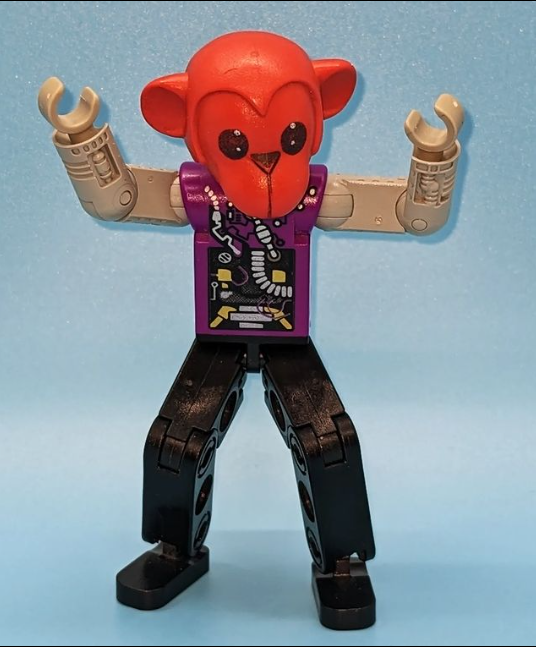
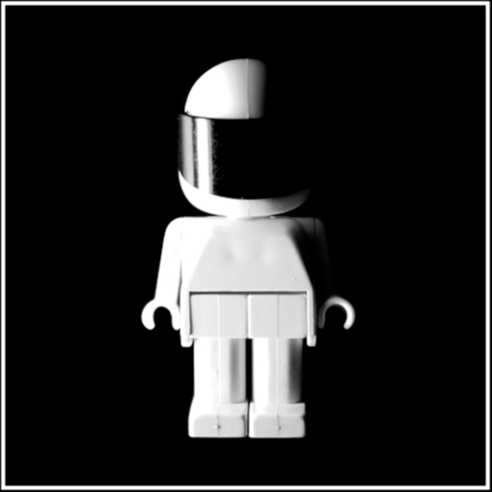
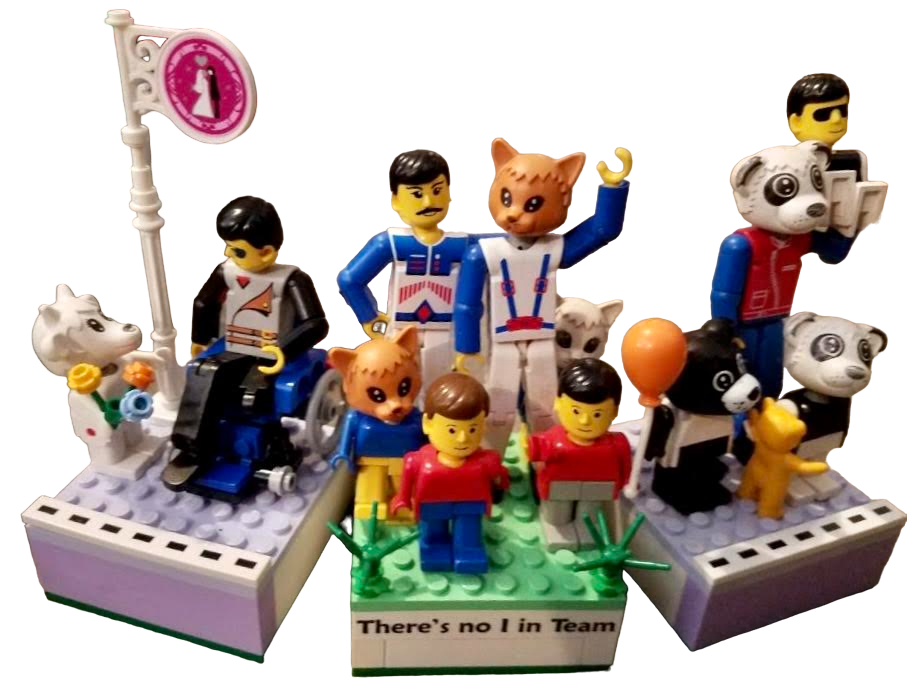
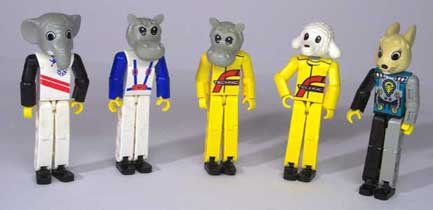
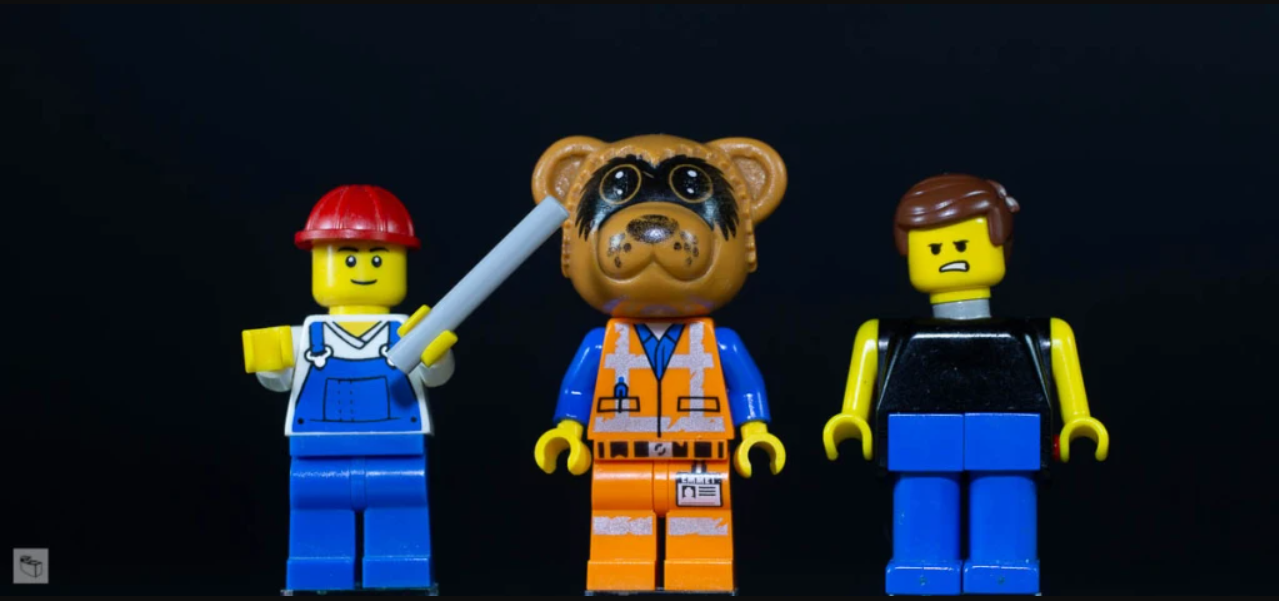
I’ll mostly let the pictures do the talking, but will leave a warning. I am not responsible for any abuse Fabuland characters suffered here. Further instructions on disassembly can be found here thanks to The Rambling Brick.
Other Fabulous People
Finally, make your own niche or style and the community will flock to you! We featured Stewart Cromar’s Star Wars-Fabuland crossover series on BrickNerd a few months ago. TrickyBricks hosted a “Mad Max: Furry Road” contest inspired by Fabuland. And these are some of my favorite Fabuland-related pieces that stand out for their individuality. And they are proof that anyone can join the Fabuland community, even if you don’t have the bricks!
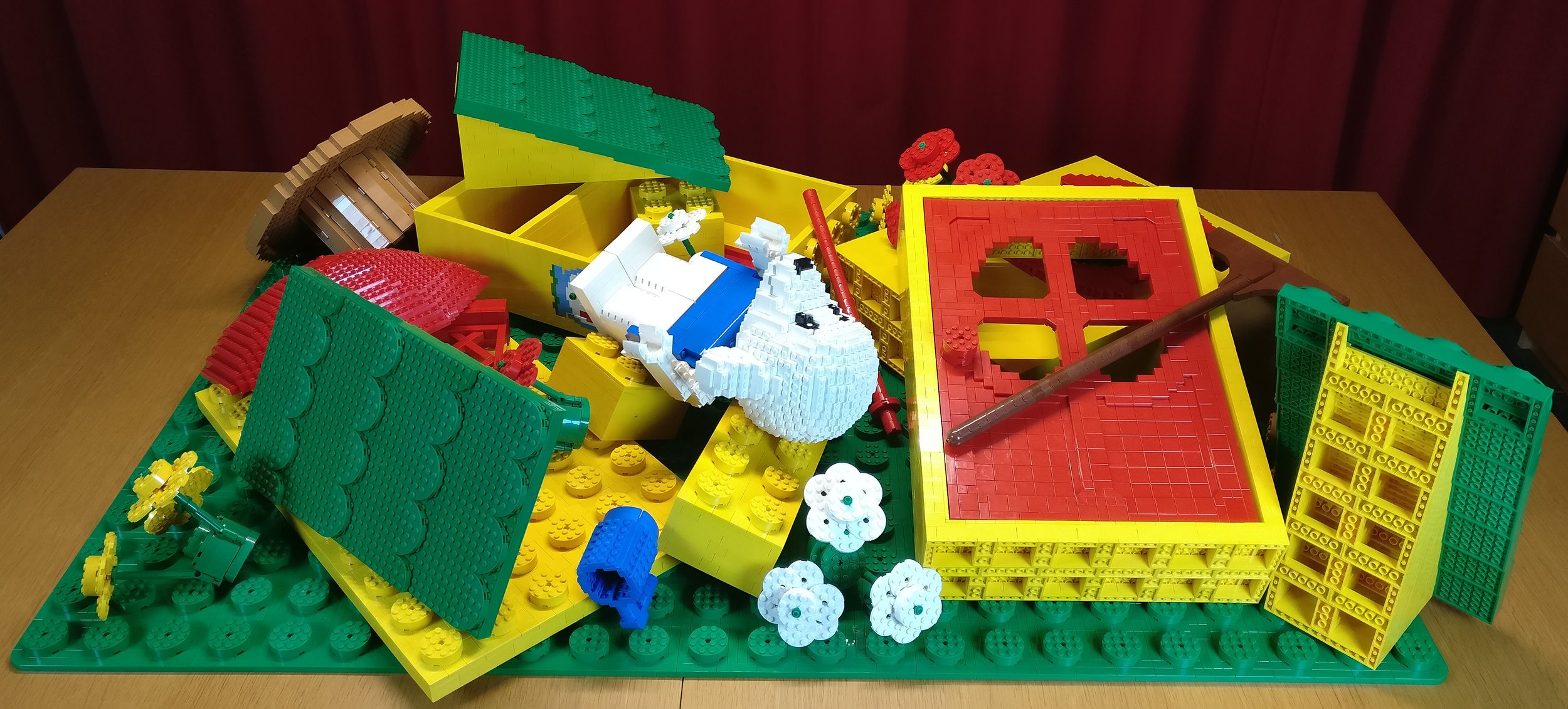
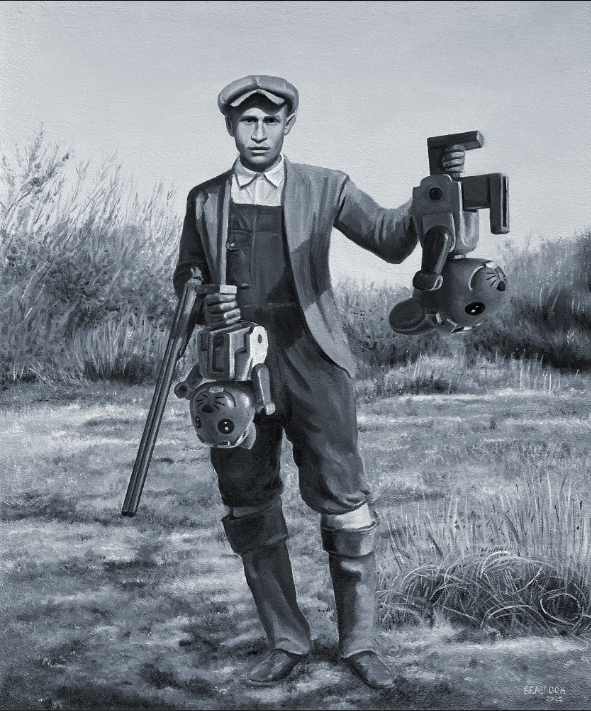
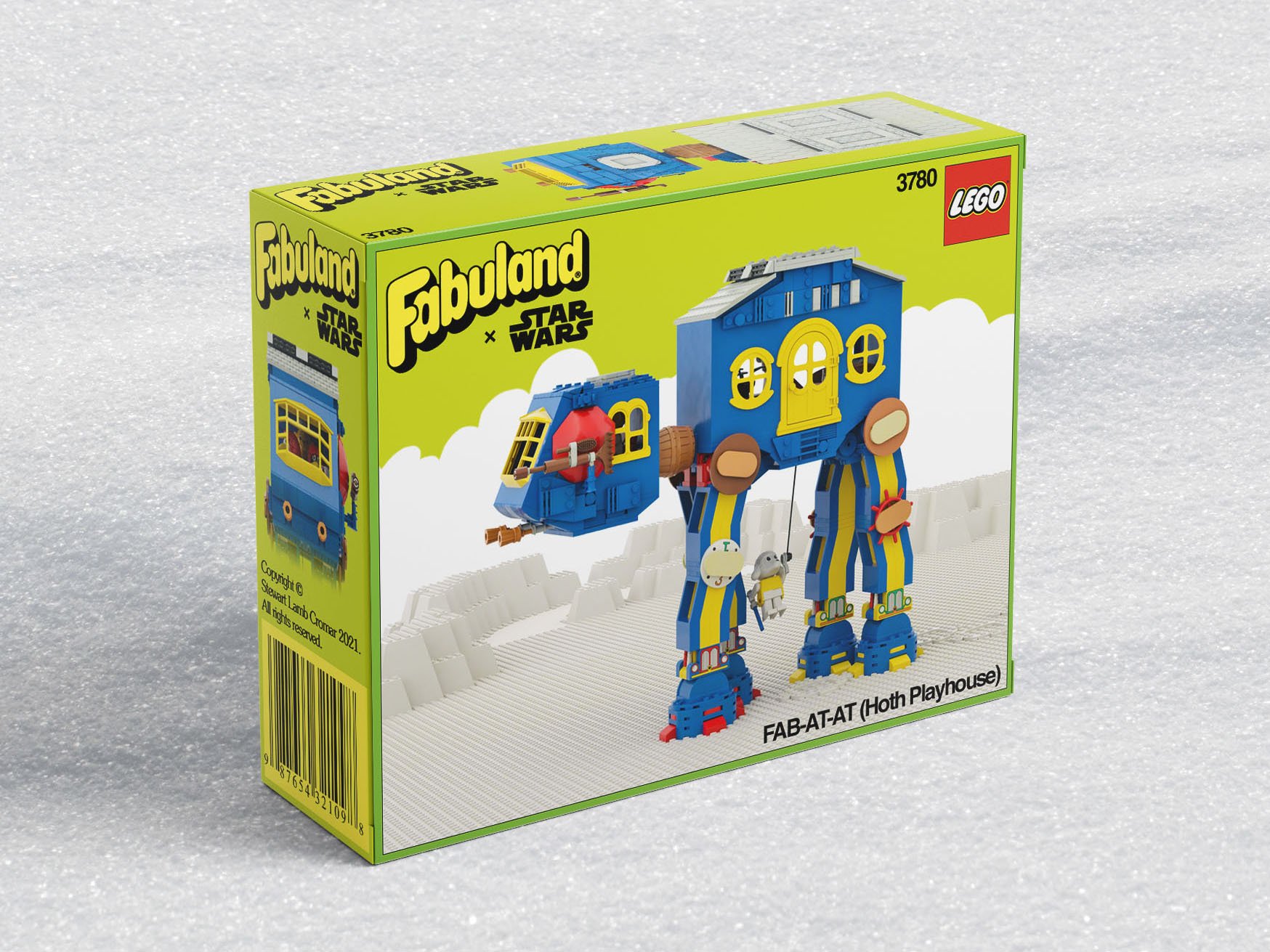
Fabuland’s Lasting Legacy in LEGO
It’s not just fans that are keeping Fabuland around. LEGO themselves have honored the theme several times in recent years. The LEGO Movie gave us a taste of Fabuland being back in the form of a Fabu-Fan, a female minifigure wearing a graphic shirt with the classic logo on it. While an extremely minor character in the film, the figure has been very popular!
Image via Bricklink.com
Image via BrickShow.com
In The LEGO Movie 2: The Second Part, we saw a Fabuland reference right away, as one of the bulldog figures was featured in the initial “The team has arrived” video (as well as some questionable labor practices later in the film). Sadly we did not see a reappearance of the figures in the wave of related LEGO sets.
However, we did get playable characters in The EGO Movie 2 Videogame. These were a bit odd though, using Fabuland heads on top of Minifigure bodies, but they did a good job capturing the feel of a Fabuland character. (Which makes you wonder if Chima or Vidiyo might have been the spiritual successor to Fabuland…)
Image via BrickFanz.com on Flickr
Most recently, the anniversary LEGO set 11021 90 Years of Play paid homage to a plethora of classic themes, one of them being Fabuland! Based on set 3601 Elton (or Edward) Elephant, it features a completely redesigned and brick-built version to go along with all of the other represented themes.
Image via LEGO.com
I’m sure that we’ll see more of Fabuland references in the future as well as even more community representation as the theme seems to be enjoying a long-deserved comeback.
Final Fabuland Thoughts
So that’s everything you want to know about Fabuland! (Or more than you ever wanted to know…) But if you’re super nerdy, hopefully the information here sends you off into the colorful realm of Fabuland to find something you connect to, whether that be the storied LEGO history, the lasting elements or the fabulous communities of Fabuland.
Oh, and if you need help getting started, try your hand at building a BrickNerd-designed mini model of Michael Mouse’s New Car. It will certainly start you off in the right direction!
Image from the BrickNerd article Instructions to Build a Mini LEGO Fabuland Car
Or if you want to have a modern experience that feels like Fabuland, try your hand at building these Animal Crossing sets to see what might be similar. Happy building!
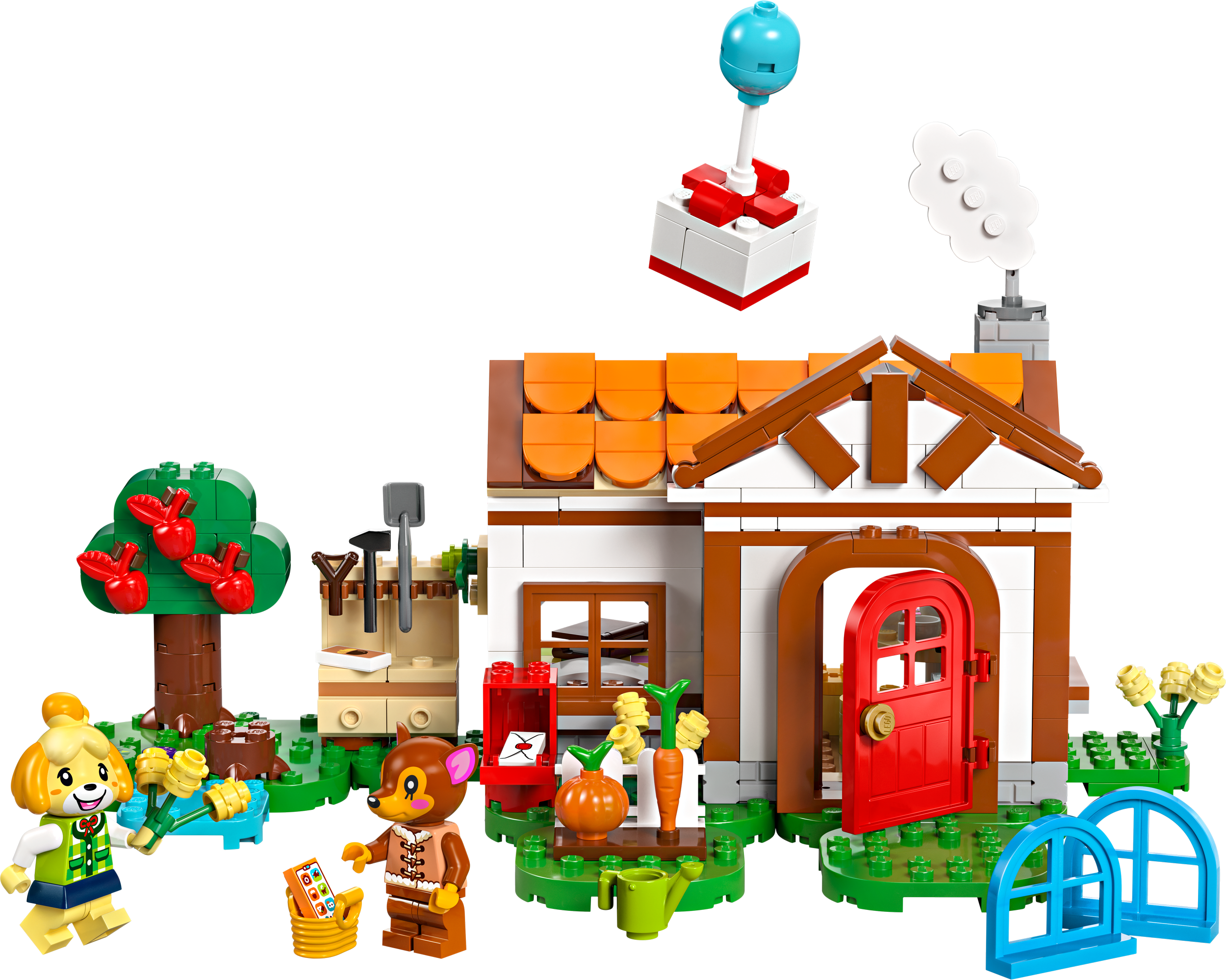
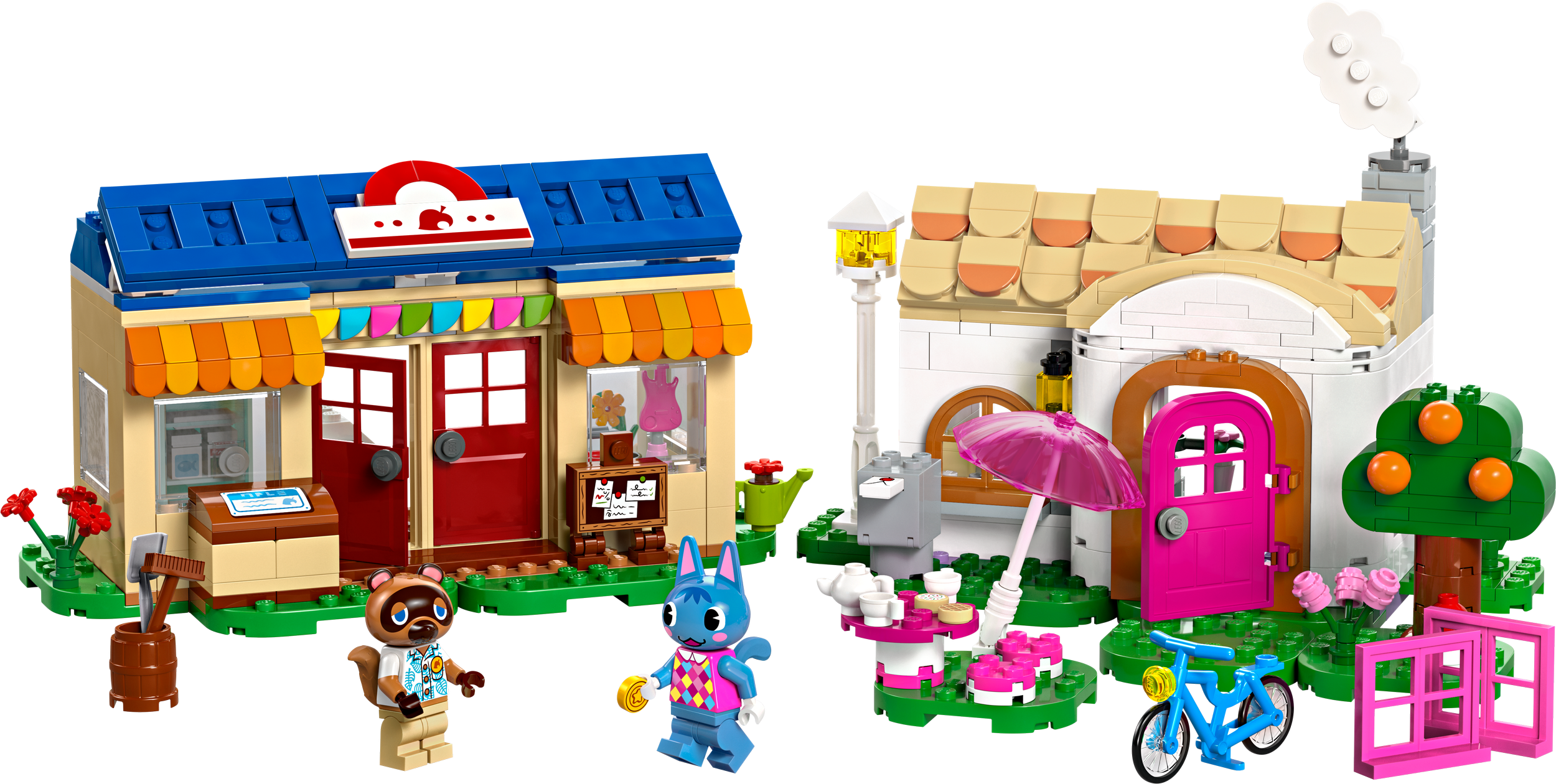
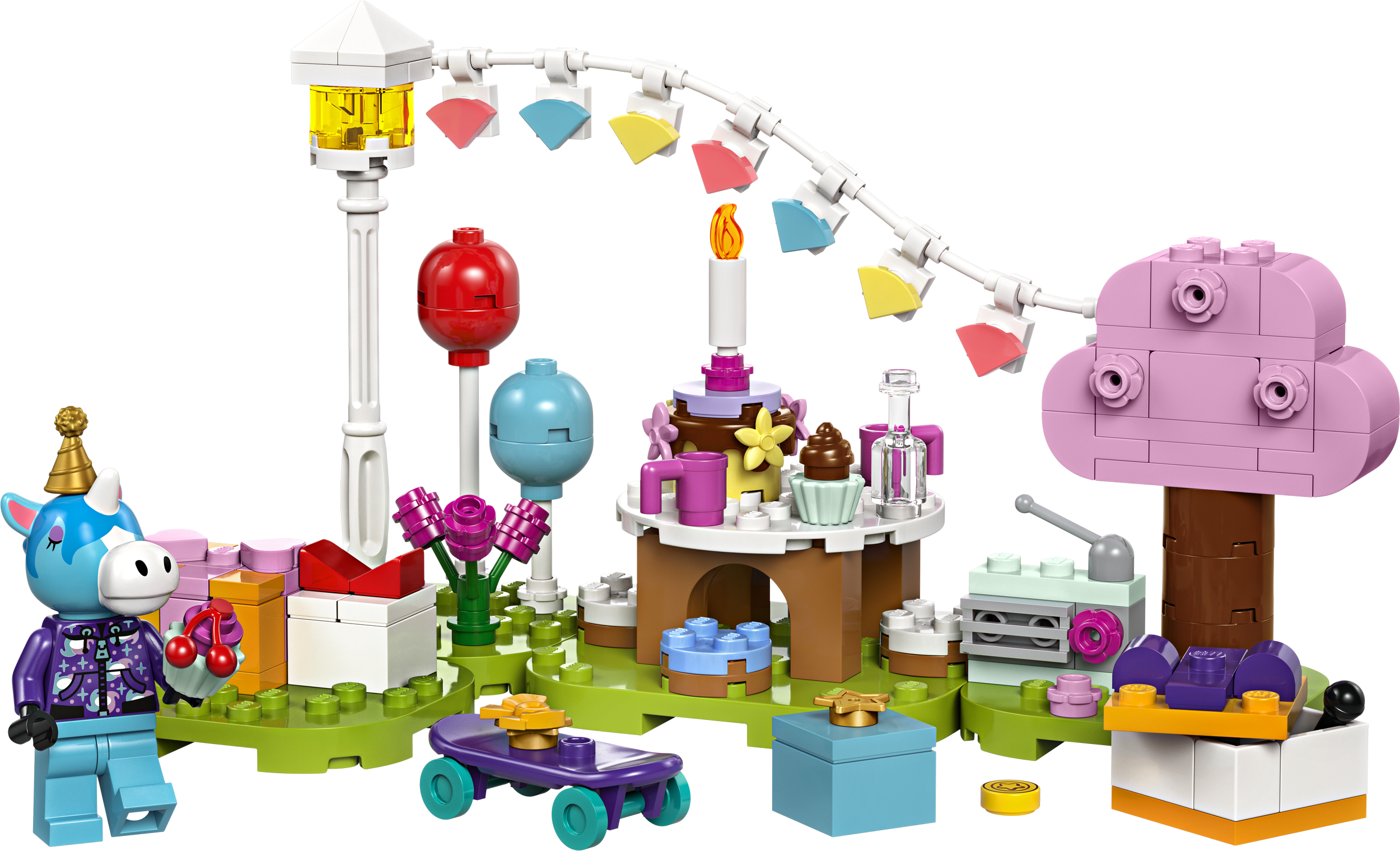
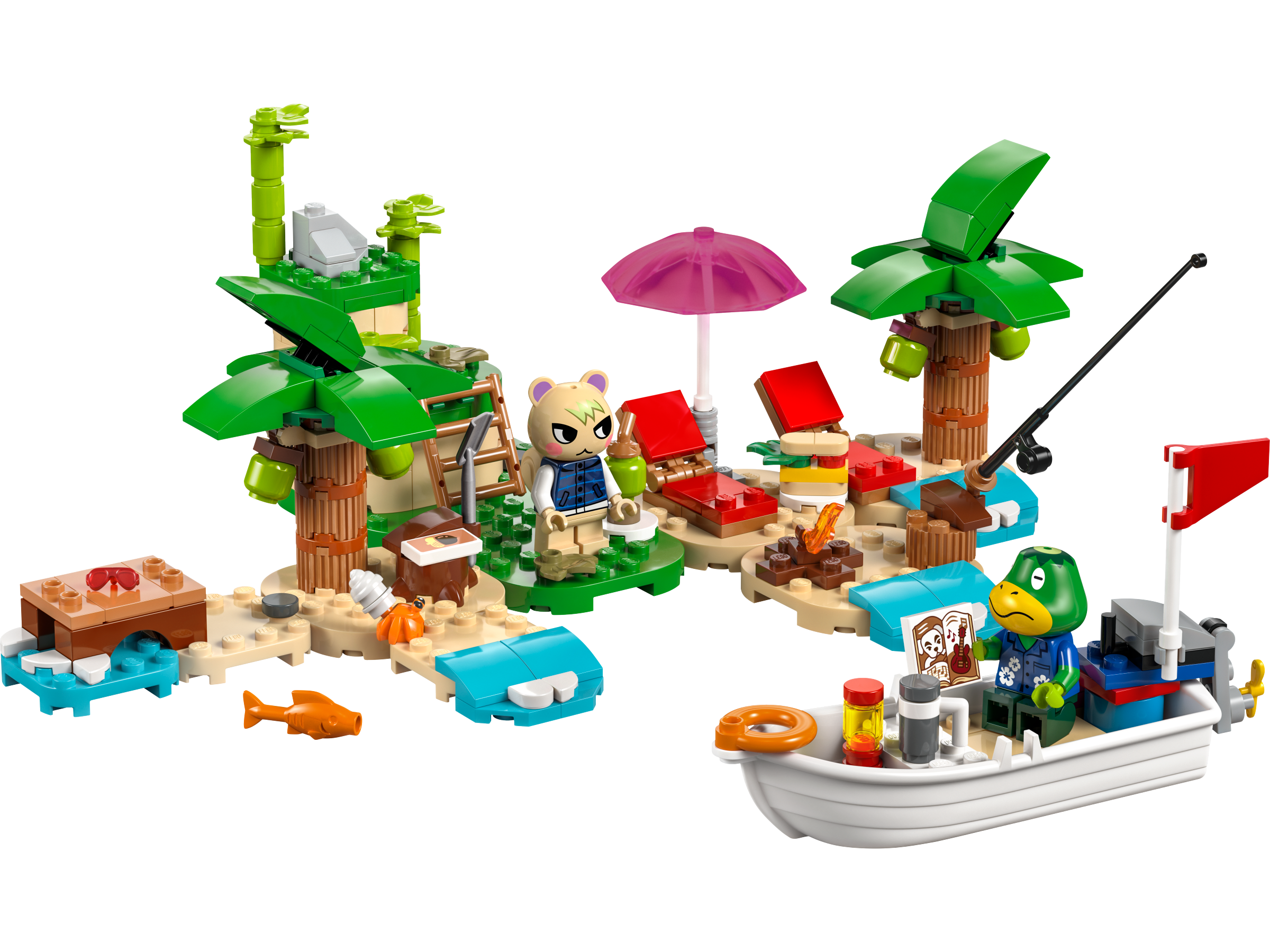
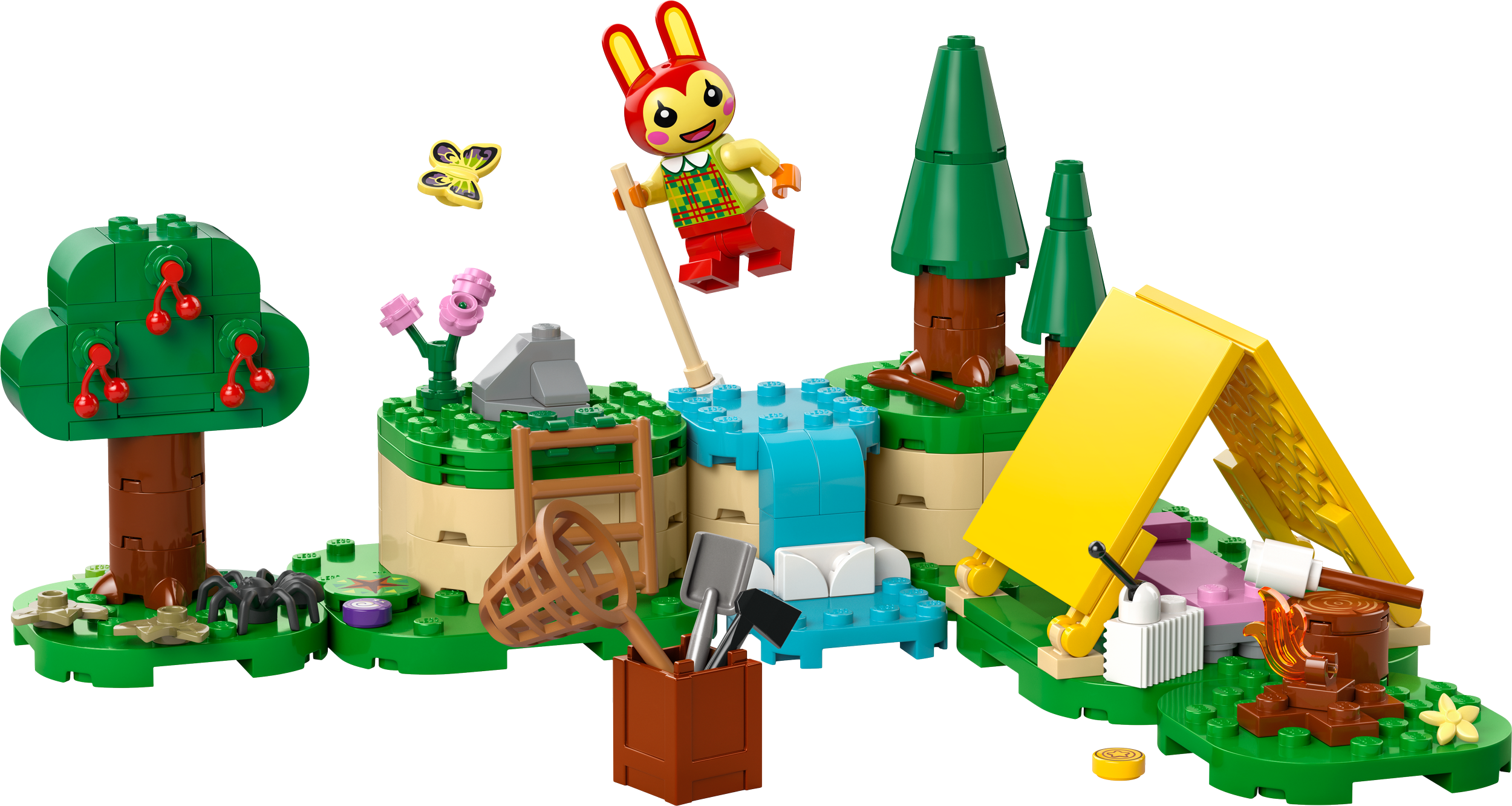
Do you have any fond memories of Fabuland? Did we miss one of your favorite Fabuland facts or MOCs? Let us know in the comments!
Do you want to help BrickNerd continue publishing articles like this one? Become a top patron like Charlie Stephens, Marc & Liz Puleo, Paige Mueller, Rob Klingberg from Brickstuff, John & Joshua Hanlon from Beyond the Brick, Megan Lum, Andy Price, John A. and Lukas Kurth from StoneWars to show your support, get early access, exclusive swag and more.










